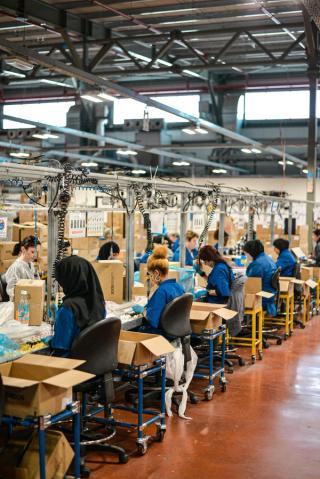
Leveraging ecologists in land development: What their expertise can bring to ESC and landscape architecture
by Kim Logan
View post

This introductory article from Peter Lo sets the scene for our Data Centre Thought Leadership Series and examines how SLR can support you in developing this critical infrastructure. Peter works in SLR’s Energy Advisory business as Global Head of New Energy Systems & Technology and specialises in strategy informed by cutting edge simulation of key energy generation and storage solutions optimising the transition to net zero for our clients.
Digital transformation continues to accelerate at a rapid pace across industries and our way of life. This is especially the case these days with the implementation of artificial intelligence (AI) spurring a greater need for storing and processing huge quantities of data.
The global data centre market is experiencing significant growth, driven by the increasing demand for cloud services, big data analytics, and the Internet of Things (IoT) devices. According to Fortune Business Insights, the market was valued at approximately $219.23 billion in 2023 and is projected to reach $584.86 billion by 2032, exhibiting a compound annual growth rate (CAGR) of 11.6%[1] during this period.
This growth highlights not just the increasing demand for data centres but also the urgent need for sustainable energy solutions to power these. With electricity costs forming a major part of data centre operational expenses, the industry’s ability to integrate low-carbon energy sources, along with other technologies, will be pivotal in its journey to net zero.
However, these data centre facilities are also extremely energy-intensive, making sustainable power solutions a top priority. At SLR, we understand the complex challenges facing data centre developers and operators, from sustainability and energy efficiency to grid resilience, cooling, and regulatory compliance. In this series, we will set the scene of the current data centre landscape, explore key trends shaping the sector and examine the role of innovative solutions in ensuring a resilient and sustainable future.
Data centres can be classified according to size and function, each designed to meet specific industry needs.
A broad and ever-expanding range of sectors rely on these data centres to power their operations. Some of the prominent ones include:
In just a short space of time, this massive growth across industries reflects the penetration of AI and data centres into our everyday way of life at work and at play, and this list of applications helps to illustrate why there are differing requirements for data centre up time.
Data centres are handling ever increasing demands for data storage and processing, and for many businesses particularly in the finance, healthcare and industrial sectors, they need to be permanently operational. Efficiency and reliability are key requirements, and service disruptions and downtime are costly. This is solved by adding redundancy for key data centre componentry and infrastructure requirements. This is measured through data centre uptime as a percentage of time that services remain operational and this metric can be affected by power supply reliability, cooling and environment and cyber-attack / natural disaster recovery.
There are myriad sustainability challenges with the high energy intensity of data centres which currently consume up to 2% of global electricity, so improving energy and water efficiency is crucial. Regulations continue to impact data centres with the introduction of more ESG and compliance requirements.
The Uptime Institute’s Tier Classification System [2] helps categorise data centres based on redundancy, fault tolerance, and expected uptime.

The higher the tier, the higher the capital cost but this also drives higher data centre uptime performance. Choosing the right tier is a balance between these elements for operators and developers.
Five key actions
So, what are the take-home points to deliver sustainability success for this technology revolution?
To align data centres with a sustainable net zero future, organisations and developers should focus on these five critical actions:
We support the sector by providing turnkey advisory solutions to the challenges of changing regulatory landscapes, carbon footprint reduction, energy supply and increasing energy efficient technologies, reducing water use, and the consumption of natural resources.
SLR is uniquely placed to provide solutions through the full life cycle of a data centre and our network of technical experts support clients in quickly bringing projects from concept to feasibility and planning to delivery. Our breadth of expertise and experience in this sector enables us to provide strategic advice and value which can unlock investment much more quickly and de-risk decision making.
The need for resilient, energy-efficient, and sustainable data centres has never been greater. By taking proactive steps today, data centre operators can future proof their infrastructure while supporting a greener, more connected world.
Our next article, "Energy solutions for data centres" will dive deeper into some of the key challenges and the energy strategies that can support sustainable growth.
Our Global Data Centre Solutions playbook showcases SLR's capabilities and experience working in this area.
Click to download----------------------------------

by Kim Logan

by Michelle Gluck, Graeme Precious

by Jessica Barua